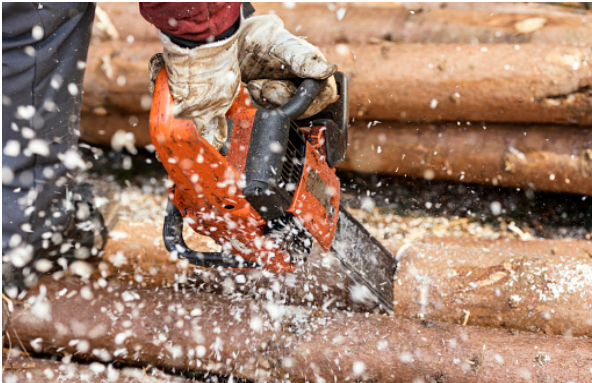Most Recent
Featured Stories

Subscribe To Receive Our Blogs
Popular Stories
Popular Tags
Arborist General Interest Business Arborist Gear Skills Training Events Tree CareCollaboration means a great deal to me, so much so that I wanted to highlight the power of collaboration in this blog entry. The concept of this article: I asked a bunch of my colleagues one thing that they'd share on chainsaws be it in cutting, maintenance, or techniques that made a big difference for them in the field. No names will be named -- these are tree workers in a variety of roles from far and wide and with a whole bunch of training and experience behind them. Not surprisingly, some of them had a hard time keeping it to one tip, and I wasn’t going to say no. I’ll turn it over to them.
Tip provider #1. Things that will get you hurt: Putting your head and neck in the kickback arc.
Running saws and regularly reaching/bending over at the waist instead of taking a knee. Running saws with poor posture, or being off balance is asking for trouble.
Tip provider #2. Use the right size saw for the job and save your energy. Stay on top of normal maintenance especially dressing bars. Change sprockets and bars together and you’ll experience less chain drift and higher cutting efficiency.
Pay attention to species, weight and lean when making snap [bypass] cuts and the gap between cuts or position of the cuts as they relate to gravity and lean, which is commonly overlooked because, well, it worked before on that other completely different species and weight and lean.
Tip provider #3. Work on making your felling cuts perfect. Doing so is habit forming. If the cut is good and weight/lean has not been misjudged, the tree (or tree part) will land where you've aimed.
Tip provider #4. Learn to sharpen your saw properly, let the saw do the work and tap out your air filter every time you fuel up. Do those 3 things and you will have less stress on your body, better running saws, and a more productive work place.
Tip provider #5. Chain tension management. Stay on top of it and you’ll reduce kickback risk, avoid thrown chains, and reduce early bar and sprocket wear. Which means more efficient cutting and less abuse on the body.
Tip provider #6. Complacency is what killed the cat. Treat the saw with the same respect you gave it the first time you used it, every day.
Tip provider #7. Wrap thumbs around the handlebar and rear handle. You lose approximately 50% of your grip when you raise your thumb from the handlebar. Two hands at all times and wrap those thumbs. 100% grip, 100% control.
Tip provider #8. Full wrap handlebars and sight lines on mid and large saws: Use them to form your undercuts and backcuts to keep you positioned facing the direction of fall, and to allow you to keep your head up checking for falling debris and movement in the canopy.
Back barring (top side of bar) is for a very narrow set of tasks. It increases kick back events and causes fatigue where there doesn’t need to be. With a simple change of position to enable the use of the bottom of the bar, you could reduce the amount of effort to hold the saw and be cutting safer and more efficiently. Learn how to buck with the absolute minimum amount of back bar by using holding wood strategically, or placing wedges.
Use proper felling dogs on larger saws and learn how to use them to make life easier. A good trick is using the low point of a felling dog to support the saw when starting angle cuts or for cleaning out felling notches. You don’t need to hold the weight of the saw awkwardly while trying to cut and as a result, you can fine tune felling notch apexes or match your felling cuts on the first try with even with the beastliest of saws.
Tip provider #9. Never run a dull saw, ever. Take the time and sharpen it and do that properly. Sharpening it well only takes marginally more time than doing it half-assed. The tools and especially your body will benefit in a big way.
The best thing I've done is compiling a comprehensive tool kit to maintain all the saws in the fold. Having sharp files, spare files, bar dressing tool, tuning screw driver, spare pull cord and air filter, etc. as well as spare chains for every saw eliminates any excuse to 'make do' with a performance issue. Letting something slide for a day can easily turn into a week or a month and if you can remedy it right there on the job then, everything keeps running smoothly.
I wash dirty air filters with the dishes (warm, soapy water) and stick them on the dish rack to air dry until morning.
Tip provider #10. Handsaws are often under-utilized.
Tip provider #11. First thing I learned was to stay out of the line of fire. In other words, even if [rotational or tip] kick back was to occur, you are eliminating or minimizing the injury/damage by staying out of the way of the kick back arc.
There are a number of cuts that you can start with a chainsaw and finish with handsaw.
Reputable professional training is always worth it. I took part in several courses and they really helped.
Thanks to everyone that collaborated, and hope this helps in your own cutting.
- Gary Oaks



